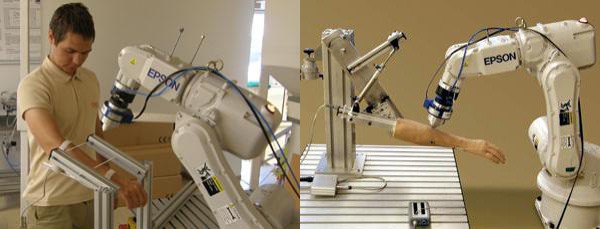Azimov's laws penetrate the present

The first of the laws of robotics Azimov says that the robot should not harm humans. How to understand where the insistence is, and where is the harm? And while Japanese scientists are collecting more and more sophisticated robots, their colleagues are already seriously thinking about the future.

')
In order to clearly fix the average allowable pain threshold of a person, a group of Slovenian engineers led by Professor Borut Povse (Borut Povse) organized an experiment in which the robot truly beats six participants of experience with varying strength. Having learned the force of the blow that a person cannot tolerate, the scientists will program the robot to exclude such gestures when interacting with humans. After testing on volunteers, a team of researchers plans to continue their experiments on artificial hands in order to experience more powerful robot impacts there.
Ideally, all the collected data should be useful for the system of automatic speed control of the robot when people are nearby.
“ Even robots that are designed according to Azimov’s laws can collide with people ,” Povš is sure. “ We try to ensure that in such cases the collision is not too strong .”
Experts have differently evaluated the study of Rough, the first results of which he recently presented at a cybernetic conference in Turkey. For example, Sami Haddadin, an “expert” in the security of human-robot relationships, believes that determining the pain limits in a collision with a robot will help to design the movements of robots that do not exceed such limits.
Another specialist, Michael Liebschner from Baylor College of Medicine, questioned the idea of measuring pain because it is a subjective feeling.
“ No one will care if you have experienced sharp pain after a robot strike ,” he says. “ What you need to prevent is physical injury because it leads to a lawsuit .”
These are the experiments.
Source engadget
Source: https://habr.com/ru/post/106320/
All Articles